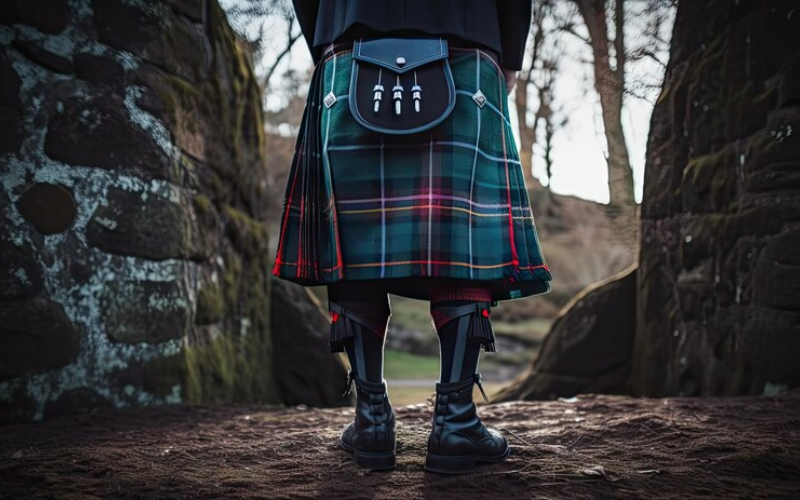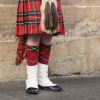Ireland, with its captivating history and rich cultural heritage, often becomes a subject of fascination, drawing attention to its distinctive style. The pervasive question, ‘Do Irish Wear Kilts?’ opens the door to an exploration of Irish fashion that goes beyond the stereotypical images. In this comprehensive journey, we aim to unravel the truths behind this query, debunk myths, and delve into the historical, cultural, and contemporary aspects that define Irish attire. As we embark on this exploration, our objective is to decode the essence of Irish style, providing a nuanced understanding of the role of kilts in Ireland.
Historical Perspective
Understanding Irish style necessitates a journey into its historical roots, a tapestry woven with the threads of tradition and cultural evolution. Traditional Irish attire, shaped by centuries of history, reflects the influences of Celtic heritage. From the loose-fitting leine to the cloak-like brat, each garment tells a story of Ireland’s past. Exploring the evolution of Irish clothing through time unveils the transitions influenced by social, economic, and cultural factors. This historical backdrop sets the stage for deciphering the complexities of Irish fashion and contributes to answering the question, ‘Do Irish Wear Kilts?’
Irish clothing has evolved with the passage of time, showcasing adaptability to changing circumstances and cultural influences. The introduction of new fabrics, the influence of neighboring cultures, and shifts in economic conditions have all left their mark on Irish attire. Traditional garments, while maintaining their core elements, have seen modifications that reflect the dynamic nature of Irish fashion.
The Kilt Question Unveiled
The inquiry into whether the Irish wear kilts warrants a thorough examination of the origins and distinctions of this iconic garment. Contrary to popular belief, the kilt has a presence in Irish history, albeit different from its Scottish counterpart. By understanding the historical context of the kilt in Ireland, differentiating between Irish and Scottish kilts, and exploring instances of kilt-like garments in Irish history, we illuminate the complexities surrounding this question. This section aims to dispel misconceptions and shed light on the nuanced role of kilts in Irish dress throughout the ages.
The traditional Irish kilt, often referred to as a lein-croich, has distinctive features that set it apart from the Scottish kilt. It typically consists of a single piece of fabric wrapped around the body, secured with a belt or pin. The choice of fabric, colors, and patterns varies, providing a regional and personal touch to the garment. While the Scottish kilt has gained more international recognition, the Irish kilt holds its own significance within the cultural tapestry.
Modern Irish Fashion Trends
In navigating the landscape of contemporary Irish fashion, the question of kilts takes on a new dimension. While kilts may not be a staple in everyday Irish wear, examining current wardrobe choices provides insights into the adaptability of Irish fashion to the modern world. This section delves into occasions where kilts might make an appearance, exploring how global fashion trends influence the preservation of Irish identity in dress.
Modern Irish fashion embraces a fusion of tradition and innovation. While traditional garments hold a special place, contemporary Irish attire incorporates a diverse range of styles influenced by global fashion trends. Occasions like weddings, cultural festivals, and artistic performances may witness the donning of kilts, emphasizing their continued relevance in certain contexts.
Cultural Significance
Beyond the aesthetic appeal, Irish attire carries profound cultural significance deeply rooted in symbolism and tradition. Traditional garments are not mere fabrics; they are symbols embedded with historical and cultural meaning. This segment explores the symbolic significance of traditional Irish clothing, shedding light on how attire intertwines with cultural celebrations and contributes to the preservation of Irish heritage. By understanding the cultural context, readers develop a deeper appreciation for the importance of clothing in expressing Irish identity and pride.
Traditional Irish clothing holds symbolic meanings that connect individuals to their cultural roots. The leine, for example, symbolizes modesty and practicality, while the brat serves both as a protective garment and a symbol of status. Understanding the cultural nuances behind each garment provides insights into the values and beliefs that have shaped Irish society through the ages.

Breaking Stereotypes: Realities of Irish Attire
Addressing common misconceptions about Irish dress is essential in dispelling stereotypes and providing a nuanced understanding of the diverse and multifaceted nature of Irish style. By highlighting regional variances in dress and celebrating the myriad expressions of Irish identity, readers gain insight into the complexities that shape the Irish fashion landscape. This section aims to break away from preconceived notions, fostering a more accurate and appreciative understanding of the vibrant world of Irish fashion.
Irish attire is not a monolithic entity; it is a diverse tapestry woven from the threads of history, culture, and individual expression. Breaking stereotypes involves acknowledging the regional variations in dress that exist within Ireland. From the vibrant patterns of the Aran Islands to the simpler styles of the midlands, each region contributes to the overall richness of Irish fashion.
Exploring Irish Fashion Icons
To fully appreciate the spectrum of Irish style, attention turns to the individuals shaping the fashion scene. From designers influencing global trends to those embodying the fusion of tradition with modernity, this section celebrates the impact of Irish fashion icons. By exploring the diverse contributions of these individuals, readers gain insights into the vibrant world of Irish fashion on the international stage.
Irish fashion icons play a crucial role in shaping the narrative of Irish style. Designers such as Paul Costelloe and Simone Rocha have gained international acclaim, bringing a contemporary Irish aesthetic to the global stage. Their work reflects a balance between innovation and a deep-rooted connection to Irish culture, inspiring a new generation of designers and fashion enthusiasts.
Conclusion
In concluding our exploration of Irish style and unraveling the truth behind ‘Do Irish Wear Kilts?,’ we find ourselves immersed in a rich tapestry of tradition, culture, and individual expression. The complexities of Irish dress, influenced by history and contemporary influences, challenge simplistic stereotypes. As readers navigate the multifaceted world of Irish fashion, may they embrace the diversity, celebrate the heritage, and find inspiration in the ever-evolving narrative of Irish style.
In decoding the truths behind the ‘Do Irish Wear Kilts?’ question, we discover that Irish attire is a dynamic expression of identity, connecting the past with the present and embracing a future where tradition and innovation coexist harmoniously. The intricate dance between tradition and modernity paints a vivid picture of Irish style that is both timeless and ever-changing. As we reflect on the rich tapestry of Irish fashion, may it serve as an invitation to explore, appreciate, and celebrate the unique stories woven into each thread of Irish attire.
Frequently Asked Questions (FAQs)
Q: What is traditional Irish clothing?
Traditional Irish clothing varies based on historical periods and regions. Common elements include the leine (loose-fitting tunic), brat (cloak), and brogues. The styles can differ, showcasing the diversity within Irish attire.
Q: Do Irish people wear kilts?
While kilts are not a mainstream part of everyday wear in Ireland, there are instances, especially in cultural events or historical reenactments, where individuals may choose to wear kilts for symbolic or heritage-related reasons.
Q: Are kilts a part of Irish cultural celebrations?
Kilts can be part of Irish cultural celebrations, particularly in events that emphasize Celtic or historical themes. However, their usage is not as prevalent as in Scottish cultural events.
Q: How has modern fashion influenced Irish dress?
Modern fashion in Ireland is a dynamic blend of tradition and contemporary trends. Traditional garments persist, but Irish fashion has adapted to global influences, incorporating modern styles, fabrics, and designs.
Q: Are there specific occasions where traditional Irish attire is worn?
Traditional Irish attire is often worn during cultural events, festivals, weddings, and other special occasions. The choice to wear traditional clothing is influenced by personal preference, the significance of the event, and the desire to connect with Irish heritage.




Leave a reply